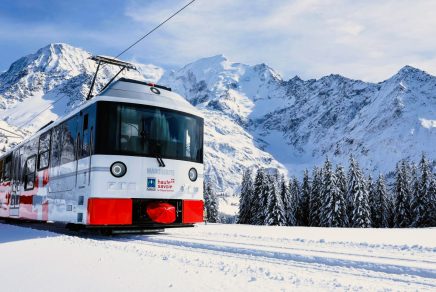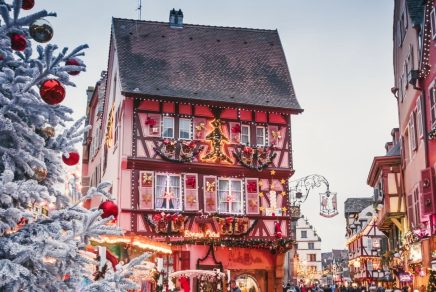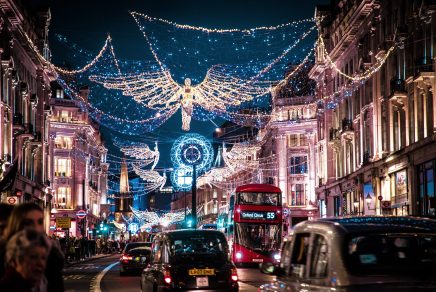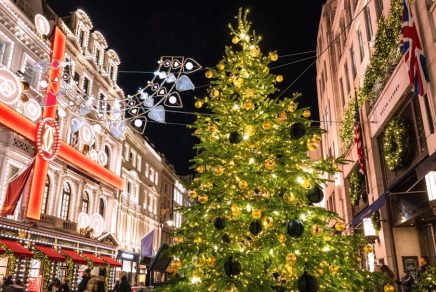The fact that there is no shortage of beautiful castles in Europe will come as no surprise to anyone. These architectural marvels are, after all, one of the Old Continent’s greatest tourist assets, having been an integral part of the European landscape for almost two millennia.
Why do castles exist?
After the fall of the Carolingian Empire around 900 AD, the vast majority of European territory was divided among countless members of the nobility, making it much easier to conquer. Castles, as fortified private residences, were the best and only way to keep a firm grip not only on the local population but also on the lucrative trade routes across the continent, allowing greedy conquerors to constantly assert their power on a very local level, as texts and emails were not yet commonplace.
We can thank the pioneering Normans for their efforts in building defensive fortresses across Europe, particularly of the motte and bailey variety; the fierce warriors were also, rather conveniently, brilliant military minds and quickly expanded their empire into Britain and the Byzantine Empire, giving us such iconic castles as the Tower of London in England and Trim Castle in Ireland.
Eventually, the layout and shape of castles adapted to reflect not only ever-changing borders, but also new technology and a less defensive, more residential role, with modern comforts and lavish living areas. Today there are thousands of castles in Europe, spanning some 10 centuries of history, from the Dark Ages to the carefree and extravagant Renaissance.
Neuschwanstein Castle, Germany
Perhaps one of the most iconic castles in the world, Neuschwanstein Castle (pronounced noy-shvan-chtine, you’re welcome) lies deep in the heart of the Bavarian Black Forest in southern Germany. You would be right to think it looks familiar, as it was the inspiration for Disneyland’s Sleeping Beauty Castle.
Unlike many other castles in Europe, it wasn’t built for any military or practical purpose. In fact, it was commissioned by Ludwig II of Bavaria as a personal retreat from public life, the king apparently being a bit of a recluse, but also out of boundless enthusiasm for the operas of his close friend Richard Wagner, as an architectural interpretation of his compositions. As such, it is seen by many as the ultimate homage to the prolific composer. What few people know, however, is that the king did not rely on public funds to complete this project; instead, he used his own personal fortune and that of a few equally wealthy confreres. The castle was opened to the public after the king’s death in 1886.
Eilean Donan Castle, Scotland
Eilean Donan Castle is not only one of Britain’s masterpieces, it’s also rightly considered one of the most beautiful castles in Europe. It overlooks three of Scotland’s most strategic lochs (lake, in Scottish Gaelic) from its presque-isle and is surrounded by the commanding wooded Kintail Mountains. It can only be reached from the mainland via a moss-covered stone footbridge. Basically, station a tartan-clad piper anywhere near the castle and you’ve got the ultimate Scottish postcard.
Situated on the edge of Scotland’s picturesque Isle of Skye, the brooding castle was built in the 13th century to protect the area from recurring Viking incursions and has since been the stronghold of the powerful Clan Mackenzie. Blown to pieces during the infamous Jacobite Rebellion of 1719, it was gradually rebuilt into the castle visitors can marvel at today.
Prague Castle, Czech Republic
Perched on the left bank of the Vltava River, Prague Castle is the most popular tourist attraction in the Czech Republic, and with good reason: within its walls lie some of the country’s most valuable cultural, historical and artistic treasures. First built in the 9th century for the Kings of Bohemia, it has been continually improved and extended by monarchs over the centuries, which explains the eclecticism for which it is renowned, representing virtually every architectural style of the last millennium, from medieval fortifications to bold Gothic and Romantic Renaissance. To top it all off, this fairytale fortress is technically the largest ancient castle in the world, covering an area equivalent to seven football pitches.
Chillon Castle, Switzerland
Undoubtedly one of the most beautiful castles in Europe, Chillon Castle is built on a rocky outcrop on the shores of Lake Geneva. And this particular location was no accident; it overlooked the highly profitable toll station of the Counts of Savoy between northern and southern Europe. As such, Chillon Castle presents a heavily fortified landward façade, concealing an intricate network of courtyards, towers and grand halls, now decorated with coats of arms and original furniture.
Don’t miss the views of Lake Geneva and the Alps from the west-facing windows.
Chenonceau Castle, France
The castles of the Loire Valley, a UNESCO World Heritage Site, form the largest concentration of Renaissance castles in the world, covering more than 800 square kilometres and including dozens of remarkable sites. Chenonceau Castle, in particular, is one of the most famous in the region, thanks to its unique multi-storey gallery over the River Cher, which makes it the second most visited castle in France after the Palace of Versailles.
Throughout its long history, Chenonceau has been the scene of many events, from the lavish parties of Queen Catherine de Medici to a makeshift hospital during the two world wars. Fun fact: it is now owned by the heir to France’s most famous chocolate company, Henry Menier. Isn’t that the sweet life?






